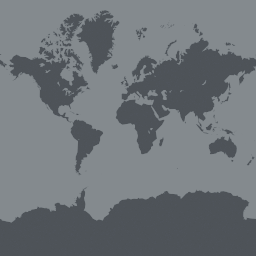Despite its aridity, Namibia contains a surprisingly high number of species and level of endemism (about 20 per cent). For the majority of species, little or no digital occurrence data is available.
This project is geared towards improving available biodiversity information from two national institutions—the National Museum of Namibia (NMN) and the National Botanical Research Institute (NBRI)—together driving the establishment of a GBIF node in Namibia.
The project further aims to improve the use and relevance of biodiversity data from GBIF throughout the country, particularly for biodiversity conservation and management, policy implementation, research, and other pertinent national development goals.
The project will create and strengthen collaboration among research institutes, development practitioners, and policy-makers within Namibia, particularly around the gathering and use of biodiversity data.
The overall impacts will include increased availability and use of biodiversity data, which can be measured directly in the number of records published through GBIF and the number of use-cases recorded. This, in turn, will improve implementation of conservation and sustainable development goals, measurable in the number of decision-making use cases of the published data.
Another major impact will be the increased awareness of GBIF open data within Namibia, improving the drive towards both general and targeted data-contributions from local institutions, and increased data-use. This will be measurable in the number of institutions taking part in stakeholder engagement workshops, and those having adopted data policies or committed to publishing data to GBIF.
The long-term impacts of the available data on these broader goals may not be easily measurable within the project period, but can be projected based on the number of stakeholders reached through the project engagement.
Project progress
The first and most important achievement of this project is the establishment of the GBIF Namibia Node. The project activities are anticipated to have key impact on the effectiveness of the new node. The NMNW (or NMN) is in the process of negotiating an international agreement for Namibia's IPT to be regionally hosted, through which these databases will be published. If this goal is achieved, a new multinational partnership will be formed among neighbouring nodes, which will likely lead to a productive future for research and conservation.
To date, one major dataset (NMNW Scorpiones) was completed and published, adding 20 new country- and/or species-records to GBIF. Various other datasets are well underway, and it is likely that more records will be published than initially proposed, many of them highly relevant for species conservation and research.
The stakeholder engagement thus far conducted was overwhelmingly positive, with key individuals in all of the country's major data-holding and data-generating institutions having expressed interest to be involved in the Node's activities and support future collaborative projects. Further engagement focusing on the use of the newly availed data will soon follow. The process to establish a national steering committee including some key stakeholders is also underway. These processes are anticipated to have a massive positive impact on the structural capacity and overall activity of the GBIF Namibia Node. An additional project partner has been added, the Directorate of Scientific Services (DSS).
The National Museum of Namibia (NMNW) data is kept on several spreadsheets, with only one collection having been placed on a relational database. A new standardised, integrated database is being built using the Specify platform, and is being stored on a small server at the NMNW. This will greatly increase the long-term feedback of quality, clean, standardised data from the Museum collections to publication onto GBIF.
All activities related to the digitization, cleaning/verification, and publication of data have been conducted, and were completed for some of the datasets (two have been published). Thousands of records were digitised for the first time, hundreds of specimens were catalogued and labelled for the first time, and several thousand records of poorly studied taxa are now available on GBIF.
Post Project activities
- Continuation of dataset development and publication.
- Continuation of database development.
- Continued interaction with stakeholders to initiate collaborative projects that will contribute data for publication, and make use of available data for sustainable development, research and conservation.
- Continued improvement of visibility of the node and its activities in Namibia and abroad.


